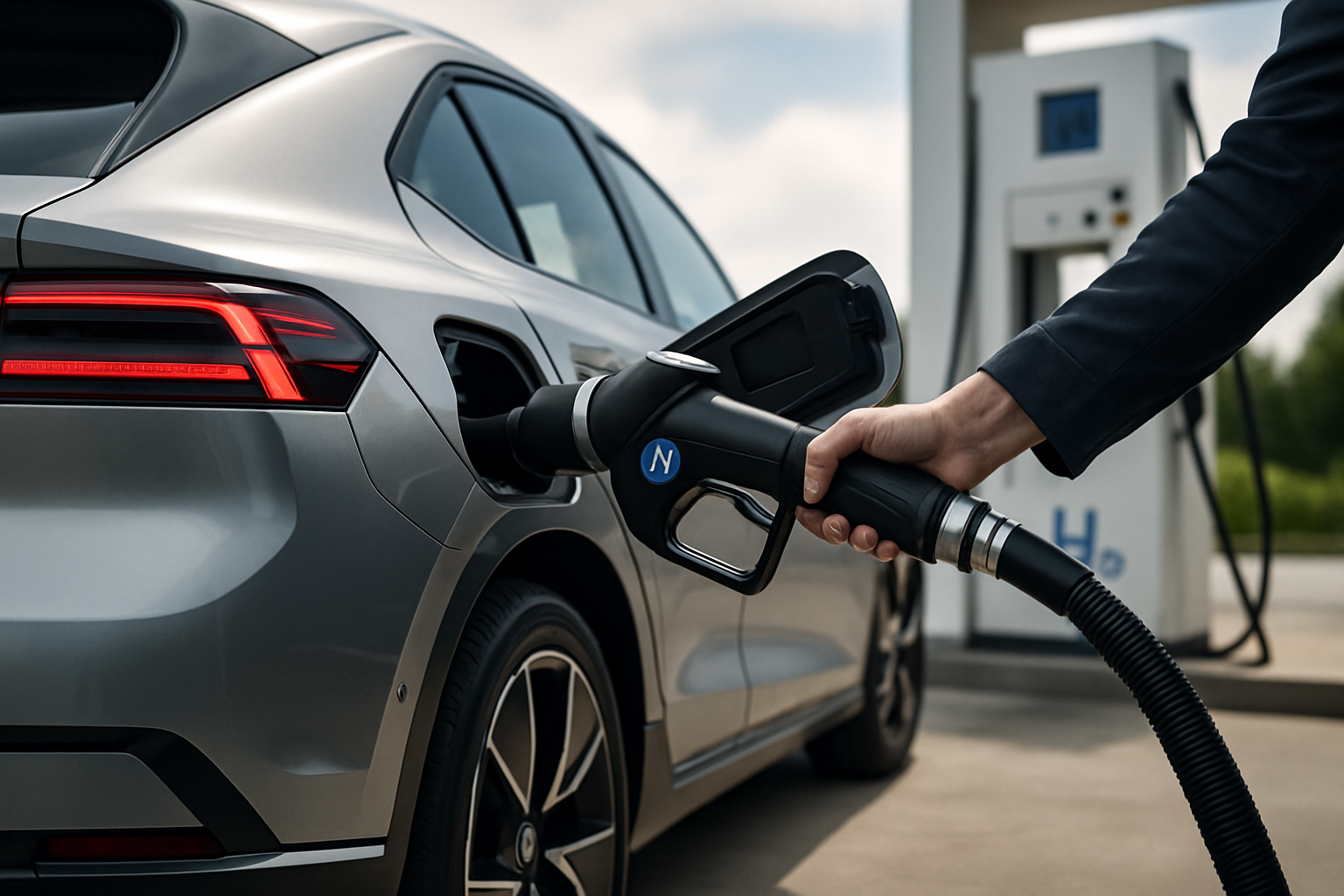Hydrogen-Electric Powertrains: The Next Frontier in Automotive Innovation
In the ever-evolving landscape of automotive technology, a groundbreaking propulsion system is emerging that promises to revolutionize the way we think about clean transportation. Hydrogen-electric powertrains, a fusion of hydrogen fuel cell technology and electric motors, are poised to become a game-changer in the pursuit of zero-emission vehicles. This cutting-edge approach combines the quick refueling times of conventional cars with the environmental benefits of electric vehicles, potentially offering the best of both worlds for drivers and manufacturers alike.

The fuel cell stack consists of multiple cells, each containing an anode, cathode, and electrolyte membrane. As hydrogen flows through the anode, it splits into protons and electrons. The protons pass through the electrolyte membrane to the cathode, while the electrons are forced through an external circuit, creating an electric current. At the cathode, the protons and electrons reunite with oxygen, forming water as the only emission.
Advantages Over Traditional Electric Vehicles
While battery electric vehicles have gained significant traction in recent years, hydrogen-electric powertrains offer several distinct advantages. Firstly, refueling a hydrogen vehicle takes only a few minutes, comparable to filling up a conventional gasoline tank. This eliminates the long charging times associated with battery electric vehicles, making hydrogen-electric cars more practical for long-distance travel and commercial applications.
Additionally, hydrogen fuel cells do not suffer from the same degradation issues as lithium-ion batteries, potentially offering a longer lifespan and more consistent performance over time. The energy density of hydrogen also allows for greater range without the need for heavy battery packs, which can impact vehicle dynamics and efficiency.
Infrastructure Challenges and Solutions
One of the primary hurdles facing widespread adoption of hydrogen-electric vehicles is the lack of refueling infrastructure. Unlike the electrical grid, which is already ubiquitous, hydrogen fueling stations are scarce in most regions. However, several countries and companies are investing heavily in building out hydrogen infrastructure.
In Japan, the government has set ambitious targets for hydrogen fueling stations, aiming to have 1,000 stations operational by 2030. Similarly, Germany plans to have 400 hydrogen stations by 2025. In the United States, California leads the way with over 40 public hydrogen fueling stations already in operation, with plans for significant expansion.
To address the infrastructure challenge, innovative solutions are being developed. Mobile hydrogen refueling stations, which can be easily deployed to areas of high demand, are being tested. Additionally, on-site hydrogen production using renewable energy sources is being explored, potentially allowing for a decentralized refueling network.
Manufacturing and Safety Considerations
Producing hydrogen-electric vehicles presents unique challenges for manufacturers. The fuel cell stacks require precise engineering and high-quality materials to ensure efficiency and durability. Platinum, a key catalyst in fuel cells, is particularly expensive, driving up production costs. However, ongoing research is focused on reducing platinum usage and finding alternative catalysts.
Safety is paramount in hydrogen vehicle design. While hydrogen is highly flammable, stringent safety measures are implemented in hydrogen vehicles. High-strength carbon fiber tanks are used to store hydrogen at high pressures, and multiple sensors and shut-off valves are incorporated to prevent leaks. In the event of a collision, hydrogen typically dissipates quickly into the atmosphere, reducing the risk of fire compared to gasoline.
Real-World Applications and Performance
Several automakers have already introduced hydrogen-electric vehicles to the market, demonstrating the technology’s viability. These vehicles offer performance comparable to traditional combustion engine cars, with some models boasting acceleration times from 0-60 mph in under 10 seconds and top speeds exceeding 100 mph.
In addition to passenger vehicles, hydrogen-electric powertrains are finding applications in heavy-duty transport. Long-haul trucks, buses, and even trains are being developed with this technology, leveraging the quick refueling times and long-range capabilities. This could significantly reduce emissions in the transportation sector, which is a major contributor to global carbon emissions.
The Road Ahead: Challenges and Opportunities
While hydrogen-electric powertrains show immense promise, several challenges must be overcome for widespread adoption. The cost of fuel cell systems needs to decrease to make vehicles more affordable. Additionally, the production of hydrogen itself must become more sustainable, as current methods often rely on fossil fuels.
However, the potential benefits are substantial. As renewable energy sources become more prevalent, green hydrogen production through electrolysis could provide a truly sustainable fuel source. This would create a closed-loop system where vehicles produce zero emissions during operation, and their fuel is generated without carbon emissions.
The automotive industry stands at a crossroads, with multiple technologies vying to define the future of transportation. Hydrogen-electric powertrains offer a compelling solution that combines the convenience of traditional vehicles with the environmental benefits of electric propulsion. As research progresses and infrastructure expands, we may well see hydrogen-powered vehicles become a common sight on our roads, ushering in a new era of clean, efficient transportation.





